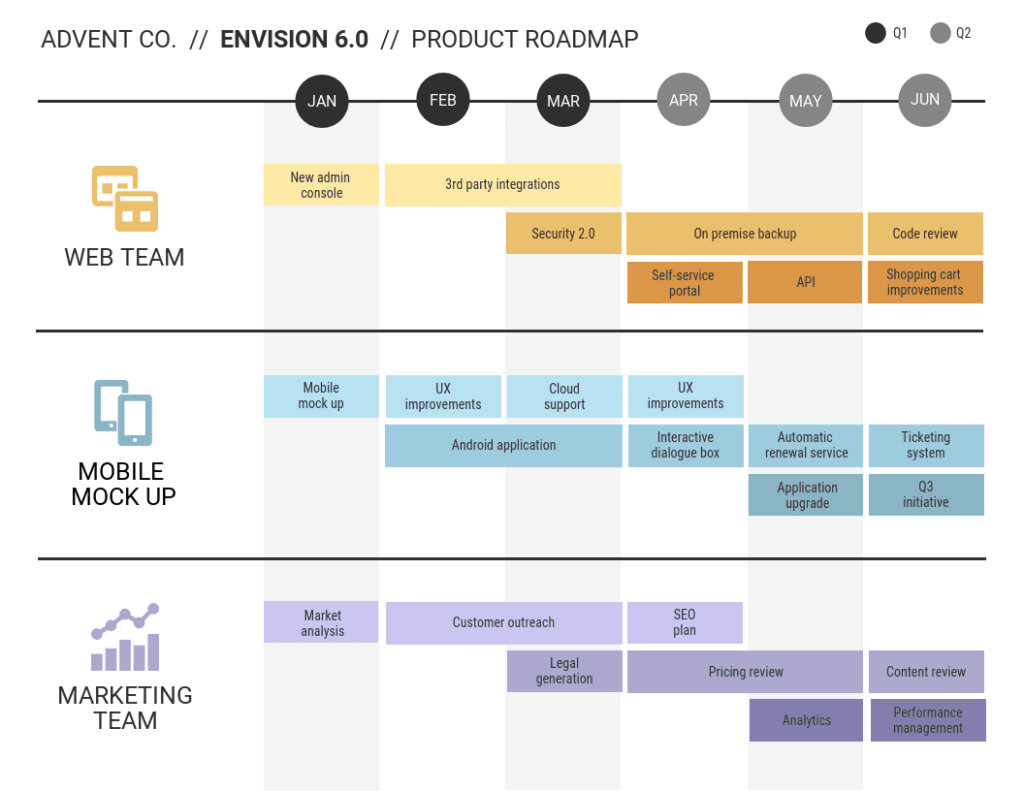
Let’s talk Product Management and your actuarial models. No, not project management, where you get super-detailed on tasks, prioritizations, dependencies, timelines, and risks. We’re talking here about product management, which is about the strategy and prioritization of your model enhancements.

Product management is the discipline of ensuring an always up-to-date strategy for product enhancements so that future work is best advancing the product towards company goals. You mostly see this in your favorite software packages, and especially software-as-a-service, where there’s always a new update or patch rolling out every two weeks or so.
In the domain of actuarial model management, then, this does not apply to traditional actuarial modeling questions, like Did we get sign-off on the new expense assumption tables? Your strategy decisions will be similar to Are we going to add the new rider into our Cash Flow Testing models this quarter or wait until next? Or Should we take time to recreate our inforce build process so that we have seriatim data rather than grouped?
Each of these questions has its own set of costs and benefits. Costs are generally time and money, in areas such as hiring an outside consultant or temporary contractor, buying new hardware or software, or diverting your team members from business as usual to make a model change. The benefits may include greater model specificity, flexibility, ease of use, or satisfying regulations like IFRS-17 and US GAAP’s LDTI.
But how do you decide amongst all the competing requests? Everyone wants everything they asked for right away and perfectly developed, which can be a daunting task. If not downright impossible. Actuaries working to decide model management priorities would do well to consider the following principles from product management. Keeping them in mind can help actuaries control their model development and maintenance efforts more effectively.
They are, no specific order:
1. The product serves the mission.
Product managers know that the product is there to do one thing: satisfy the mission of the organization. Because of this perspective, product managers ask and answer one question first whenever considering new features or enhancements: What is the return on investment? That is, will this requested change better help us serve our customers and all stakeholders? If the return is significantly lower than alternative requests, this change is going to drop on the priority list.
The same is true for an actuarial model: it exists to help the insurance company satisfy its obligations to policyholders, regulators, and shareholders. Because of this, it is critically important for actuaries managing their model changes and enhancements to consider, What is the expected return on this model development effort? If it’s too low, however that return is measured (cost of running the model, turnaround time, precision of results, whatever), then that development should be paused, postponed, or not even attempted. If it’s above the hurdle rate, then it can be considered.
2. Ensure all stakeholders get a voice.
Stakeholders is a wide audience. In software development teams, stakeholders include the clients (obviously), the engineers designing and building the product, company leadership, and even investors.
For actuarial models, the stakeholder population reaches beyond just the professionals who may be running the models and viewing output results on a month-to-month basis. There’s Operations, Underwriting, Audit, Customer Service, Marketing, Sales, Finance, IT, and potentially more. To be fair, you’re not going to pull in a representative from every department for every quarterly prioritization session. However, it’s good to circulate your road map (see #3) to key players frequently to get their perspective on your list of enhancements and improvements, and let them weigh in on how what you’re planning might impact their work.
3. Apply a system for planning changes, enhancements, and improvements.
Your model enhancements should not simply be a numbered list of bugs found in the model and working through them from top to bottom. Good product management considers a set of priorities and ranks the potential changes according to those various priorities, in order to determine what should be worked on next, and which can be deferred until later.
This usually results in a “road map” of planned changes, with major development efforts organized into future time frames. Note – this is not the detailed workflow analysis of individual action items. Instead, it is more strategy than execution – what will be done next? And after that? And after that? Why?

This prioritization should be a regular occurrence. Most software teams perform this exercise on a quarterly basis. More frequent and it leads to perpetual whiplash as teams constantly swerve from one priority to another. Too infrequent (or not at all) means teams end up developing elements that are obsolete or useless, because they didn’t stop to refocus once the general surroundings changed. Which leads to the next point:
4. Be aware of your surroundings.
What’s going on in the general economy? What are your competitors doing? Are there some vendor decisions that may impact your work? What are the signals your customers are sending to you with their purchases, lapses, and requests for information? These are questions you should be asking to inform the expected return on model development efforts.
If you don’t pay attention to what’s outside you, (whether the “you” is just your actuarial department or your company in general), you will end up with model development efforts that just don’t produce the return on investment that you thought they would. Because they end up solving the wrong problem at the wrong time, and the time spent working on those initiatives distracted you from focusing on those aspects that just became newly-important when your competitors introduced a new product, or the budget was cut in half, or regulators announced a delay or acceleration of some timeline.
If you’re not paying attention, you’ll ultimately be wasting your work.
5. Make sure to understand dependencies.
Does A unlock B while C unlocks D? How do you choose, if A+B is the same payoff and return as C+D? Suppose B unlocks E, F, and G, while D unlocks J, K, and L? Do E, F, and G ultimately provide a greater return than J, K, and L? Then you should follow the path to the greatest return, and do A, B, E, F, G. Alternatively, if it’s the other way around, you would prioritize C, D, J, K, L.

Making sure your dependencies are considered will ensure that you’re getting the highest return on your investment.
As well, understanding dependencies means you wouldn’t try to approach G, and K without first having completed C and D. Which would ultimately end up costing you time, money, and emotional frustration as you don’t get what you want, because you didn’t do the first things first and tried to run before you could walk.
6. Understand constraints (generally time, money, technology).
Unfortunately, you can’t do everything you want right away. There will always be constraints, from the budget that is available to the skill level of the professionals on staff. Or, as in the case with most actuarial model development, your team is already quite busy just completing the day-to-day work and you don’t feel like you have the time to devote to ancillary projects.
One impact of this is that if you’re also asking your day-to-day professionals to jump into development work, there may be whole seasons in which they are unavailable for these kinds of model enhancements. Knowing when they will be available or unavailable will help ensure the plans are realistic and useful in understanding any additional resources that may need to be procured.
7. Learn how to say “Not Yet”.
A very important principle from product management is that every request has value, it just may not be the right time to implement it.
Frankly, every suggestion had merit at some point, or it wouldn’t have been requested in the first place. Which means that there is a potential for a better use of your model, a higher degree of accuracy, or a more efficient run waiting for you to get to it. Considering all the other aspects of the prioritization equation means that this one element isn’t right right now, but it might be right at some point in the future.
Good product managers know how to walk that line between outright rejection of a request and a postponement to a more appropriate time. You may need to do this with your actuarial models, too, as requests that seem unreasonable now may become more valuable in the future. Because, remembering points 2, 4, and 5 above, everything changes. Just remember that and you’ll be good.
8. Documentation and communication are essential.
Not everyone is going to remember everything from every meeting. That’s why you write down the decisions made, who made them, why, and for what purpose. Then you keep everyone “in the loop” through regular communications.
“If you don’t feel like you’re over-communicating, you probably aren’t communicating enough.”
Alex reeve
Distribute your road map after you develop it. You should be ready with different versions with varying granularities depending on your audience. Some may want to know a 5-quarter, kind-of-fuzzy-but-still-pretty-close-to-the-right-direction forward look. Others may want to know specifics about 1-2 quarters ahead, so they can inform their own decisions.
Again, this isn’t the project dashboard (to show tasks overdue or on-schedule/budgets/ resources) but the visual display of product strategy. As such, it should be informative but not limiting.
9. Keep the end goal in mind always.
Yes, this is a reframe of #1. Yet it’s important enough that we feel like it’s necessary to say it again. And we’ll say it again and again and again. You must always keep in mind the questions of “What are we going to get out of this effort? What will it cost? Is it worth it?” Because the end goal isn’t a model with smaller error bars or fewer steps to get from extract to dashboard. The end goal is better business decisions by using the model to inform about the uncertain risks inherent in the portfolio, and how the company could prepare for those uncertainties.
When you approach your prioritizations and communication like a product manager, you’ll be well on your way to effective actuarial model management.

